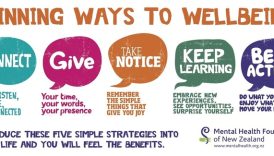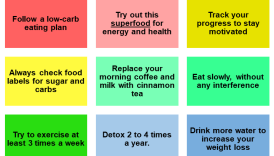Discover the Secrets to a Vibrant and Healthy Lifestyle

In today’s fast-paced world, the pursuit of a healthy lifestyle can often become overwhelming. Between balancing work, family commitments, and personal interests, it can be easy to overlook vital components that contribute to overall wellness. However, taking a holistic approach by focusing on nutrition, physical activity, quality sleep, and stress management can create a transformative impact.
- Discover the Secrets to a Vibrant and Healthy Lifestyle
- Embracing a Holistic Approach
- Key Components of Health
- Importance of Nutrition
- Balanced Diet
- Superfoods to Add to Your Diet
- Regular Physical Activity
- Benefits of Exercise
- Workout Ideas for Every Fitness Level
- Quality Sleep
- Tips for Improving Sleep Quality
- Creating a Relaxing Bedtime Routine
- Stress Management
- Mindfulness and Meditation Techniques
- Time Management Strategies
Embracing a Holistic Approach
Many individuals find themselves lost in the sea of diet fads and quick-fix workout routines. They may try every new trend in hopes of achieving their health goals, only to feel disillusioned when results don’t stick. This cycle can be exhausting. Instead, consider the power of embracing a balanced approach. For instance, a friend of mine decided to tackle her health journey by not just focusing on exercise but also on how she nourished her body. By incorporating nutritious meals, regular exercises, consistent sleep schedules, and methods to manage stress, she experienced substantial improvements not only in physical health but also in her mental well-being.
Key Components of Health
To truly thrive, one should consider the following foundational pillars:
- Nutrition: Ensuring a balanced diet rich in essential nutrients supports overall health.
- Regular Physical Activity: Movement boosts metabolism and enhances mood.
- Quality Sleep: Rest is crucial for recovery and mental clarity.
- Stress Management: Effectively managing stressors can improve resilience and longevity.
Each of these components is intertwined, playing a significant role in creating a robust lifestyle. Throughout this blog, we will explore these key areas in depth, providing valuable insights and real-world examples that can help you forge a path towards a healthier, more fulfilling life. So, whether you are looking to overhaul your health routine or simply make slight adjustments, let’s embark on this journey together!
Importance of Nutrition
As we delve deeper into the essentials of a healthy lifestyle, one cornerstone stands out prominently: nutrition. The foods we consume play an integral role in our physical and mental well-being. Understanding the importance of a balanced diet can set the foundation for improved health and vitality.
Balanced Diet
A balanced diet isn’t merely about calorie counting or adhering to strict food restrictions. It’s about incorporating a variety of nutrients that fuel our bodies effectively. A typical balanced meal should consist of:
- Fruits and Vegetables: Aim for a colorful plate! Different colors often signify a variety of nutrients and antioxidants.
- Lean Proteins: Think chicken, fish, legumes, and nuts that help repair muscles and maintain a healthy weight.
- Whole Grains: Swapping white bread for whole-grain options provides essential fibers that aid digestion.
- Healthy Fats: Olive oil, avocados, and nuts are all great sources of healthy fats that contribute to heart health.
For example, when my own eating habits shifted towards a more balanced approach—featuring diverse food groups—I noticed not only an increase in energy levels but also an improvement in my mood.
Superfoods to Add to Your Diet
In the realm of healthy eating, superfoods often steal the spotlight. These nutrient-dense foods are packed with vitamins, minerals, and antioxidants. While there are numerous superfoods to consider, a few stand out for their significant health benefits:
- Quinoa: A complete protein that’s gluten-free and rich in fiber—perfect as a base for salads or bowls.
- Blueberries: Packed with antioxidants, they can aid in improving memory and overall brain function.
- Kale: Known as a leafy green powerhouse, it’s loaded with vitamins A, K, and C, promoting healthy skin and eyes.
- Chia Seeds: High in omega-3 fatty acids, they are great for heart health and can easily be added to smoothies or yogurt.
Incorporating these superfoods into daily meals doesn’t have to be complicated. Simple swaps, like mixing spinach into smoothies or adding berries to breakfast, can significantly enhance nutrient intake. In summary, a balanced diet coupled with the inclusion of superfoods can greatly elevate your health and overall quality of life. The journey towards better nutrition is a process, but every small change counts towards achieving long-term wellness.
Regular Physical Activity
Building on the importance of nutrition, another fundamental component of a healthy lifestyle is regular physical activity. Exercise can often feel daunting, especially for those just beginning their wellness journey. However, understanding its myriad benefits can inspire anyone to lace up their sneakers and get moving.
Benefits of Exercise
The benefits of exercise extend far beyond just weight loss or bulking up at the gym. Regular physical activity offers a wealth of advantages that contribute to overall well-being:
- Improved Mood: Exercise stimulates the production of endorphins, the body’s natural “feel-good” hormones. After a workout, many people report feeling an instant uplift in their mood, which is often referred to as the “runner’s high.”
- Enhanced Energy Levels: It may seem counterintuitive, but being active can actually boost energy. Engaging in regular physical activity helps improve circulation and oxygen flow throughout the body, leading to increased stamina.
- Better Sleep: Regular exercise can help regulate sleep patterns, making it easier to fall asleep and enjoy deeper rest—a vital factor for recovery.
- Cognitive Benefits: Studies show that physical activity plays a critical role in boosting brain health and improving memory.
Reflecting on personal experience, whenever I make time for a quick jog or even a brisk walk, I find that not only do I feel physically revitalized, but my mind feels clearer and more focused.
Workout Ideas for Every Fitness Level
The great thing about exercise is that it can be tailored to fit anyone’s fitness level and preferences. Here are some engaging workout ideas that cater to a variety of individuals:
- Beginners:
- Walking: A simple way to start is with a daily 30-minute walk. It’s low-impact and easy to incorporate.
- Bodyweight Exercises: Squats, lunges, and push-ups can be done at home and require no equipment.
- Intermediate:
- Cycling: Whether on a stationary bike or outdoors, cycling can provide a refreshing change of pace.
- Yoga: A blend of strength and flexibility that can be both physically and mentally rewarding.
- Advanced:
- High-Intensity Interval Training (HIIT): Short bursts of intense exercise followed by rest intervals can boost cardiovascular health and build endurance.
- Weightlifting: Incorporating resistance training can help achieve muscle growth and improve metabolism.
In conclusion, integrating regular physical activity into daily routines does not require hours at the gym; it can be enjoyable and fulfilling while contributing to a more robust lifestyle. Start where you are, and gradually build your fitness journey—every step counts towards a healthier you!
Quality Sleep
Transitioning from the importance of regular physical activity, one crucial aspect often overlooked in the pursuit of health is the quality of sleep. It’s not just about the number of hours you spend in bed; it’s about the restorative properties that sleep offers our bodies and minds. Poor sleep can counteract the benefits of nutrition and exercise, making it essential to prioritize this important facet of well-being.
Tips for Improving Sleep Quality
Improving sleep quality can be simpler than many think. Here are some practical tips to help you enjoy a more restful night:
- Stick to a Consistent Schedule: Try to go to bed and wake up at the same time every day, even on weekends. This routine helps regulate your body’s internal clock.
- Create a Comfortable Sleep Environment: Your bedroom should be dark, quiet, and cool. Consider using blackout curtains or a white noise machine if external light or noise is disruptive.
- Limit Blue Light Exposure: Reduce screen time from phones, tablets, and computers at least an hour before bed. Instead, opt for reading a book or practicing relaxation techniques.
- Be Mindful of Food and Drink: Avoid heavy meals, caffeine, and alcohol close to bedtime, as these can disrupt sleep patterns.
I remember the days when I’d sacrifice sleep for late-night shows, only to pay the price the next day. Since implementing some of these tips, I’m amazed at how I wake up feeling truly refreshed.
Creating a Relaxing Bedtime Routine
Engaging in a relaxing bedtime routine can signal to your body that it’s time to wind down. Here are some steps to consider:
- Set a Technology Curfew: As mentioned, reducing screen time can significantly enhance your body’s ability to prepare for sleep.
- Incorporate Relaxation Techniques: Practices such as deep breathing, meditation, or gentle stretches can ease tension and promote tranquility.
- Limit Fluid Intake: Try to drink less liquid in the hour before bed to minimize trips to the bathroom during the night.
- Journal Your Thoughts: Spending a few minutes writing down worries or a gratitude list can help clear the mind and set a positive tone before sleep.
Crafting a consistent and calming bedtime routine can make a profound difference in sleep quality. While the hustle of daily life may tempt you to skip these practices, prioritizing sleep is a vital investment in your overall health and well-being. A better night’s sleep leads not only to greater energy levels but also to improved focus and mood—an essential combination for navigating daily challenges.
Stress Management
Building upon the foundation of quality sleep, another critical component of maintaining overall health is effective stress management. In our fast-paced world, stress can become an unwelcome companion, impacting both mental and physical health. Employing strategies to manage stress not only enhances your quality of life but also helps you maintain balance across all aspects of wellness.
Mindfulness and Meditation Techniques
One powerful method for reducing stress is through mindfulness and meditation. These practices encourage individuals to center themselves and focus on the present moment. Here are some techniques that can be easily incorporated into daily life:
- Mindful Breathing: Take a few moments each day to concentrate on your breath. Inhale deeply for four counts, hold for four, and exhale for four. This practice can help calm racing thoughts and lower anxiety.
- Guided Meditations: Apps like Headspace or Calm offer a variety of guided meditations that range from a few minutes to half an hour, catering to different needs and skill levels.
- Body Scan: Lie down comfortably and mentally check in with different parts of your body, noticing where you might be holding tension. This technique encourages relaxation and increases body awareness.
- Gratitude Journaling: Spend a few minutes each night writing down three things you are grateful for. Reflecting on positive aspects of your day can shift your mindset and lessen feelings of stress.
I started incorporating simple mindfulness exercises during lunch breaks, and I’ve found that a few minutes of focused breathing dramatically increases my productivity in the afternoon.
Time Management Strategies
Another essential element of stress management is effective time management. With the right strategies, you can take control of your schedule rather than feeling overwhelmed by it. Here are some proven techniques:
- Prioritize Tasks: Use the Eisenhower Matrix to categorize tasks as urgent, important, or both. Focus on what truly matters.
- Break Tasks into Smaller Steps: Large projects can seem daunting. Breaking them into manageable pieces reduces feelings of overwhelm and allows for steady progress.
- Set Time Limits: Allocate specific time blocks for tasks to help maintain focus and prevent procrastination. Using techniques like the Pomodoro Method (25 minutes on, 5 minutes off) can drastically improve productivity.
- Learn to Say No: Boundaries are crucial. Politely declining additional responsibilities when you’re overloaded can help maintain your sanity and keep stress levels in check.
By adopting mindfulness practices alongside effective time management techniques, individuals can develop a resilient and balanced approach to tackling life’s challenges. Reducing stress is an ongoing journey, and the right strategies can lead to a more fulfilling and tranquil life. Prioritizing mental wellness fosters a stronger foundation from which to engage with both personal and professional responsibilities.





